|
Lily-Rose Depp and George MacKay in Wolf (2021) In the high-concept Irish drama Wolf, director and writer Nathalie Biancheri explores the subject of species dysphoria. The term references a psychological condition in which a person feels they are trapped in the body of the wrong species, generally an animal. Jacob (George MacKay) believes himself to be a wolf inside a human body. His family sends him to a clinic, where he is forced to undergo extreme “curative therapies” at the hands of The Zookeeper (Paddy Considine). As these so-called treatments grow more disturbing, the only solace Jacob finds is in the enigmatic Wildcat (Lily-Rose Depp), with whom he roams the clinic grounds in the dead of night. Cloaked in darkness and bellowing a resounding howl, this is the only time of day Jacob feels like his true self. Given the air of hopelessness in Jacob’s parents during a visit to the clinic, this place feels like a last resort to “correct” a disorder. The film presents this world in a serious way. The Zookeeper (a scary-good Considine) is free to do as he pleases, taking extreme measures in the name of “treatment”. Biancheri meets serious subject matter with a careful, no-nonsense approach. But perhaps a little too careful, given the more daring ideas she has at play that come and go. George MacKay’s totally fearless performance at the center of Wolf sets a bar the film can’t keep up with.
At the clinic, Jacob shares a communal space (designed like the interior of a prison) with a handful of patients who also have species dysphoria, each identifying as a different animal. There’s German Shepherd (Fionn O’Shea), Parrot (Lola Petticrew), Squirrel (Darragh Shannon), Horse (Elsa Fionuir), and Annalisa/Panda (Karise Yansen) to name a few. Wolf takes an empathetic approach in forgoing the need to explain why everyone is assuming their identities. The reality is that they simply are, and each has done something (unspecified in the film) that led their families to put them in the temporary care of The Zookeeper. He decides when each patient is ready to be released back into the world. Conflict arises whenever he and clinic staff (doctors, nurses, therapists) intervene, often to implement therapy designed to push patients to the absolute edge in order to achieve a breakthrough. In one instance, Parrot (Lola Petticrew)’s feet are held down atop a window ledge as The Zookeeper vehemently encourages her to jump out the window and fly. Using her refusal to jump as proof she’s a girl, not a parrot. The film has quite a few scenes such as this moment, ones where forced tactics are on display, and builds to a terrifying sequence of mockery. Biancheri’s script tries to balance the patients’ identity journeys with the terror they’re experiencing, but feels aimless in deciding on what story to tell. Wolf lingers in memory as melodramatic, with some daring choices made along the way to subvert expectations. When all is said and done, it’s tricky to find a thread to really connect with outside of MacKay and Depp’s work in the film. One of the more consistent elements of Wolf is that the actors are on the same page with the director’s approach. The cast bring a grounded quality to the characters, and never veer into caricature territory. Most impressively George MacKay, who gives one of the best performances of the year. Jacob’s journey and bond with Wildcat grow as the core of this film, and MacKay commands the screen with startling physicality. He’s wrestling with an internal ferociousness, and his uncomfortableness is palpable. From the way he moves and contorts his body, to the sounds he makes, the actor reaches a level of commitment that sets the bar high for his screen partners. Depp gives a great performance as Wildcat but disappointingly, her character becomes more and more of a plot device. Considine’s character veers into similar territory as well with a more stereotypical character. The Zookeeper is a question mark, and Considine plays him to frightening effect. Though uneven and a little too melodramatic for its own good, Nathalie Biancheri’s Wolf engages in some thought-provoking ideas when it comes to approaching species dysphoria. Subverting expectations of a YA genre film, she latches onto a psychological drama and brings a grounded perspective to telling the story. Instead of exaggerating the animal identities, there is a frankness and directness to the approach. The production design and cinematography have a cold, sterile look, mirroring how The Zookeeper and most of the clinic workers operate. There’s no warmth. All the uncertainty about the patients’ futures puts Jacob and Wildcat in conflict, butting heads about the meaning of survival. For Jacob, life is not just about surviving the day, but surviving authentically as he was born to be, and he is willing to jump into the deep end. While Wolf doesn’t reach its potential heights, the film has a strong backbone in George MacKay. Wolf had its world premiere at the 2021 Toronto International Film Festival, and will arrive in theatres across Canada on December 3.
0 Comments
Onessa Nestor in She Paradise (2021) She Paradise is a coming-of-age story of new beginnings and unexpected encounters in the scene of soca-music dance. The film is the directorial feature debut of Maya Cozier, who follows up her short film of the same name and re-casts Onessa Nestor as the protagonist. Sparkle (Nestor) is a teenage girl who stumbles upon a free-spirited dance crew. Among the dancers are Diamond (Kimberly Crichton), Shan (Denisia Latchman), and Mica (Chelsey Rampersad). Altogether they step into the seemingly glamorous setting of music videos and nightlife. Keeping a watchful eye on Sparkle’s late nights and frequent time away from home, her Papa (Michael Cherrie) lets his frustration be known. The path to become a soca-music dancer is a lot harder than Sparkle first reckoned. Unsetting encounters with abuse and exploitation are at the core of Cozier’s film, which has a haunting message even though the runtime is far shorter than desired. She Paradise explores an intriguing set of dynamics shared between girls who are trying to follow their dreams and look out for one another at the same time.
Set in Trinidad, She Paradise is a story of personal discovery and growth. Sparkle is in a complete whirlwind from the moment she looks upon a group of dancers, wide-eyed and eager to join. Her character is intriguing to watch precisely because she steps into a new environment with confidence, and subverts other dancers’ expectations at every turn. The screenplay, co-written by Cozier and Melina Brown, makes a point to feature moments in which Sparkle surprises her surroundings. She makes decisions that reflect self-protection. She has a strong need to see her determination through in spite of what’s happening around her, in spite of how her actions can affect the other girls in the dance crew. The film introduces a complex character and interesting dynamics between the dancers, but doesn’t amount to a fully realized feature. Ideas spark on the surface and just when the story leans into the protagonist’s character development, the film ends. While there are plenty of benefits to watching films with a short runtime, and so much can be said within such time, She Paradise falls short by wrapping up the journey prematurely. On the one hand, reflecting on where Cozier ends her film stresses how refreshing it is that this coming of-age story has no resolution of any kind. The ending is the beginning. The cookie-cutter narrative of coming-of-age films and their fairytale endings is not a path that She Paradise entertains. She Paradise walks a fine line between making friends and trying to survive in a ruthless reality. The group of girls at the center of this film find some comfort in sharing spaces. They are almost immediately connected and sense the dangers of what’s ahead. The film subverts expectations by leaning into the complicated dynamics between the female characters, teetering on jealousy but also wanting to shield one another. One of the disappointments from the film’s premature ending is not getting the opportunity to watch these relationships unfold in fuller capacity. The story is constantly moving in a flash, but She Paradise struggles to hold onto the urgency of its environment. Caitriona Balfe and Jamie Dornan in Belfast (2021) “No matter how far you go, you never forget where you came from.” The 1969 riots in Northern Ireland saw an outbreak of the Troubles, a period of political and sectarian violence between Catholics and Protestants. Belfast was the scene of much conflict. During a week in August, the destruction of homes and businesses in the capital city led thousands of families to evacuate. In fear of what would become of their communities, in fear of losing their lives. What people left behind was not just violence, but also a sense of home. A place in which many laughs were shared and sweet memories were made. The people of Belfast left the only place they know. The experience of this conflict is told from a child’s perspective in the film Belfast, written and directed by Kenneth Branagh. By focusing the narrative on young Buddy (Jude Hill), Branagh draws from his own childhood in a loving way, full of a desire to understand what his parents went through. Belfast gives an ear to all the conversations and events surrounding Buddy that lead one family to make a huge sacrifice for a better life. Branagh’s bittersweet ode to family and belonging is heartwarming to watch. It's one of the most enjoyable films of the year that leaves you wanting more time with the characters. Buddy (Jude Hill) lives with his working-class family - Ma (Caitriona Balfe), Pa (Jamie Dornan), brother Will (Lewis McAskie), Granny (Judi Dench), and Pop (Ciarán Hinds). Buddy lives in a place where everyone knows his name. That the brothers are given personalized names, while the adults have names the children would call them, is one of many details putting the viewer as a fly on the wall inside a family’s home from a child’s point of view. Branagh gives a lens to what makes their house a home, from the recurring moments Buddy watches Westerns on TV, to the intimate family conversations shared…the good, the bad, and the ugly. As Pa works in England, returning to visit every 2 weeks, Ma holds down the home front with support from Granny and Pop. The family do their best to keep an eye on the children, and also want to give them a normal childhood where they can run and play in the neighborhood without fear. But when violence breaks out at their front door, the reality of the Troubles is near inescapable. Based on true events from Branagh’s childhood, the film is his most personal yet as he recreates vivid memories from an inward place of vulnerability. Branagh and the entire cast put their heart into crafting an intimate experience that is every bit hopeful in the face of conflict. The story has layered details that seem tiny and fleeting, but this is where life happens. From day-to-day conversations with Granny and Pop, to Buddy’s school crush, and magical wide-eyed nights out to the theatre. This is where comfortability and acceptance grow, making it all the more tough for Buddy’s family to decide leaving a place where everyone knows who they are. Pa’s urgency to move is met with Ma’s resistance to uproot the entire family and sacrifice the home they have built. Jude Hill in Belfast (2021) Amidst the religious and political tensions, this is a story about a family surviving. Part of that is how they find a source of joy in each day. The film has some cheerful sequences, from movie outings to a musical number of ‘Everlasting Love’ performed by Jamie Dornan. Belfast has a shorter runtime than expected, and it would have been great to see Branagh lean more into the musical aspects because ‘Everlasting Love’ is such a burst of warmth. It’s a reminder of unconditional love and how often the relationships between family members can be taken for granted. The music in this film is great all around, featuring songs from Belfast-born Van Morrison which adds to the atmosphere of childhood. The beautiful black and white cinematography by Haris Zambarloukos makes the film look like a nostalgic memory, and transitions to a few pops of colour in fitting moments.
The film’s depiction of a tumultuous time stretches beyond a single incident. Instead of writing a story that builds up to one climax, Belfast is about the range of memories made in all the moments between. Branagh does a great job building on what makes Belfast home to Buddy. Nine-year-old Jude Hill carries the film so well, with innocence and humor, and a moving outlook on wanting to keep his family together. The supporting cast are gems to watch, with standouts in the performances by Caitriona Balfe and Ciarán Hinds. Both take what could have been generic roles and bring so much detail to them, with a lived-in quality that makes them instantly feel like family. No matter what happens, no matter the hardships they go through, they will always be a family. As the character of Pop advises to Buddy, as long as he knows who he is, he will never forget where he comes from. Belfast is a love letter to the place where your heart lives, one that is unforgettable and true. Branagh’s film is for the ones who stayed, the ones who left, and the ones whose lives were lost. Belfast is now playing in theaters across Canada. Thomasin McKenzie and Anya Taylor-Joy in Last Night in Soho (2021) Things aren’t so great when you’re downtown in Last Night in Soho. Edgar Wright’s latest film is a mishmash of homages to eye-popping, twisted European horror-thrillers. Dario Argento’s Suspiria comes to mind with the vibrant colors, creepy exterior locations, and visual motifs of glamorous characters in dazzling settings. The story follows two young women from different eras of London whose lives collide like a nightmare come true. Aspiring fashion designer Ellie (Thomasin McKenzie) travels from the English countryside to attend a prestigious design school in present-day London. Feeling out of place among her dorm roommates, she rents a flat on her own. At nightfall in her new place, she is mysteriously able to enter the 1960s, where she meets a wannabe singer named Sandie (Anya Taylor-Joy). Through vivid visions, Ellie finds inspiration for her work in fashion. But the allure of 60s London is not what it appears to be. As the truth about Sandie comes out, Ellie is wanting desperately to save her from her troubles. Dangerous ideologies and years of patriarchal oppression cause a deeply unpleasant chain of events that haunt characters through the swinging 60s and contemporary gloom. But the clashing of worlds only accentuates Last Night in Soho’s lack of a coherent core to bring ideas together. Edgar Wright blends exaggerated mystery with campy giallo horror, and uses interesting mirror imagery to show a seamless transition between two eras. The visual contrasts between present-day and 60s London are well-done. The former has a grey and gloomy atmosphere, while the latter turns on the bright lights and swirls of colorful backgrounds. Pops of color often dazzle the screen when the eras blend and nightmarish elements begin to haunt Ellie’s waking life. As for why Ellie is given a window into this period of time, that is a mystery. Ellie is on the brink of a new opportunity in fashion. She’s in a brand new city, and her visions of Sandie provide a muse for her sketches at school. But all goes horribly wrong when the visions become more grizzly and disturbing. Wright explores the seedy underground of a nightclub where young women are being exploited and mistreated by gross, violent men. Among them Jack (Matt Smith), who promises Sandie a successful stage career and watches callously as she falls into an upsetting and enraging series of incidents that the romanticized era sweeps into silence. Ellie’s visions pull back the curtain with troubling implications and circumstances. The more parallels she finds in the present-day, the more she latches onto Sandie, wanting so desperately to save this young girl from danger. Thomasin McKenzie in Last Night in Soho (2021) The mirroring identities of Ellie and Sandie feel like a half-realized idea that never truly reaches fruition. While the concept makes for strong visual sequences, there is a disconnect between the imagery and progression of the characters in this story. Wright’s over reliance on ambiguity encourages most of the characters to go in vague directions. By the end of the film, there is so much left unsaid about Ellie and Sandie beyond the plot devices they are more in service of. The disappointment in not getting to know more of Sandie in particular leads to a climax that falls flat in its impact. Though with talent such as Thomasin McKenzie and Anya Taylor-Joy, both do their absolute best to bring the characters to life in a memorable way. To a greater extent and with more to do, McKenzie continues to impress with another strong performance. Tayloy-Joy is a star channeling the mystique of old Hollywood glamour. Plus there’s a great overall ensemble, including the late Diana Rigg who shows what an effortlessly magnetic talent she was. The cast embrace the rollercoaster of Last Night in Soho, with far more lows than highs, and its final-act silliness.
The subjects of sexual exploitation and entertainment industry horrors are handled in a questionable way. There is a lot going on thematically that Wright addresses, but the messily handled story undercuts the weight of these subject matters. The story builds to an underwhelming turn of events, lacking the penny drop effect that Wright appears to be going for. The characters of Last Night in Soho become more and more like background pieces. The film misses the opportunity of spending more time with Ellie’s insights. What she’s going through mentally, particularly after the loss of her mother, is greatly overpowered by Wright’s stylized choices. While the style makes for some neat swinging 60s sequences, Last Night in Soho gets lost with how to tell a coherent story. |
Archives
June 2024
Categories |

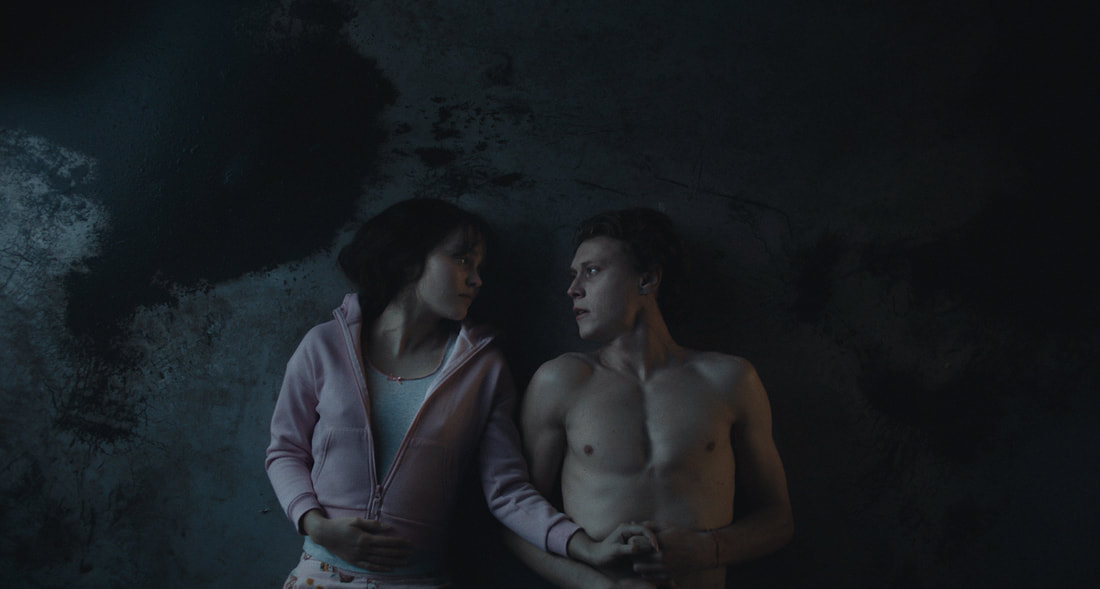
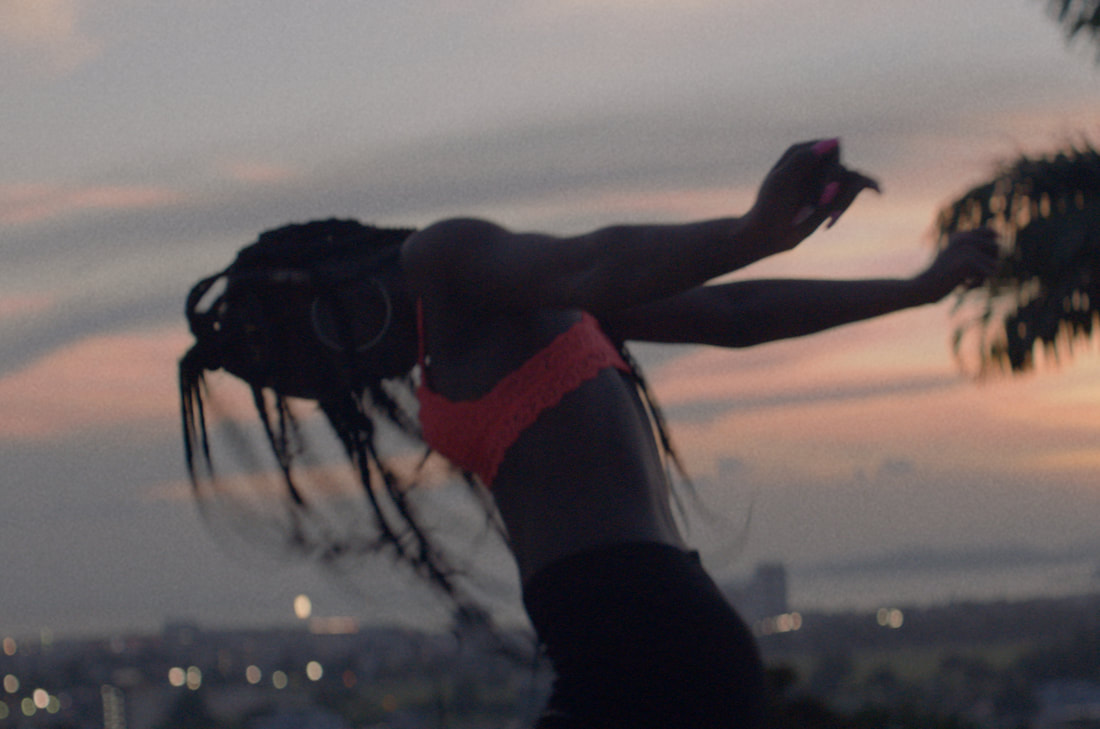
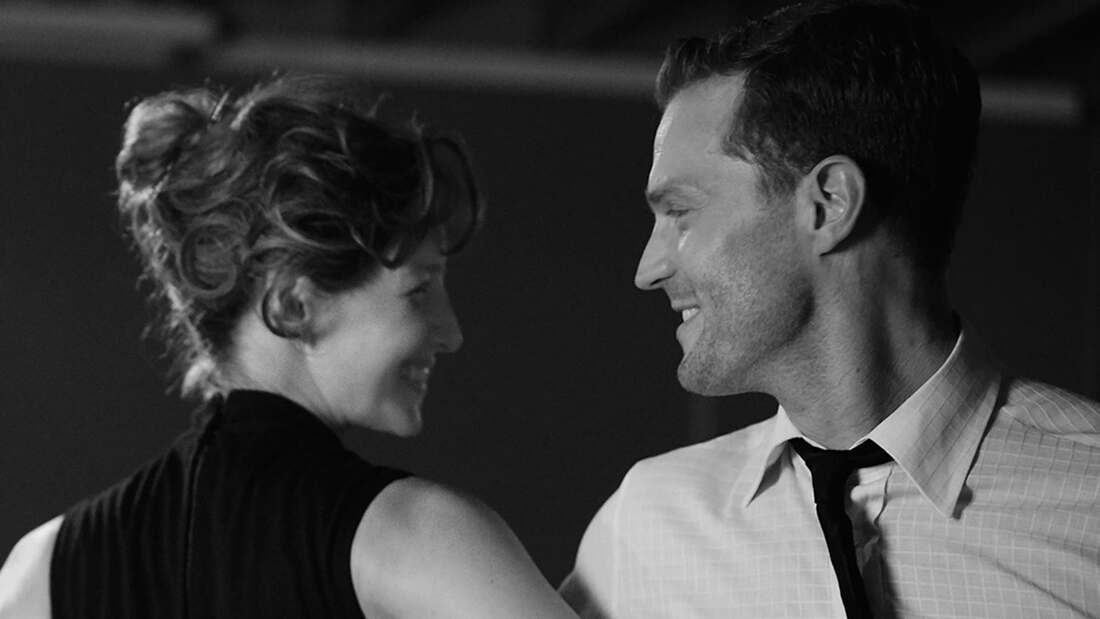
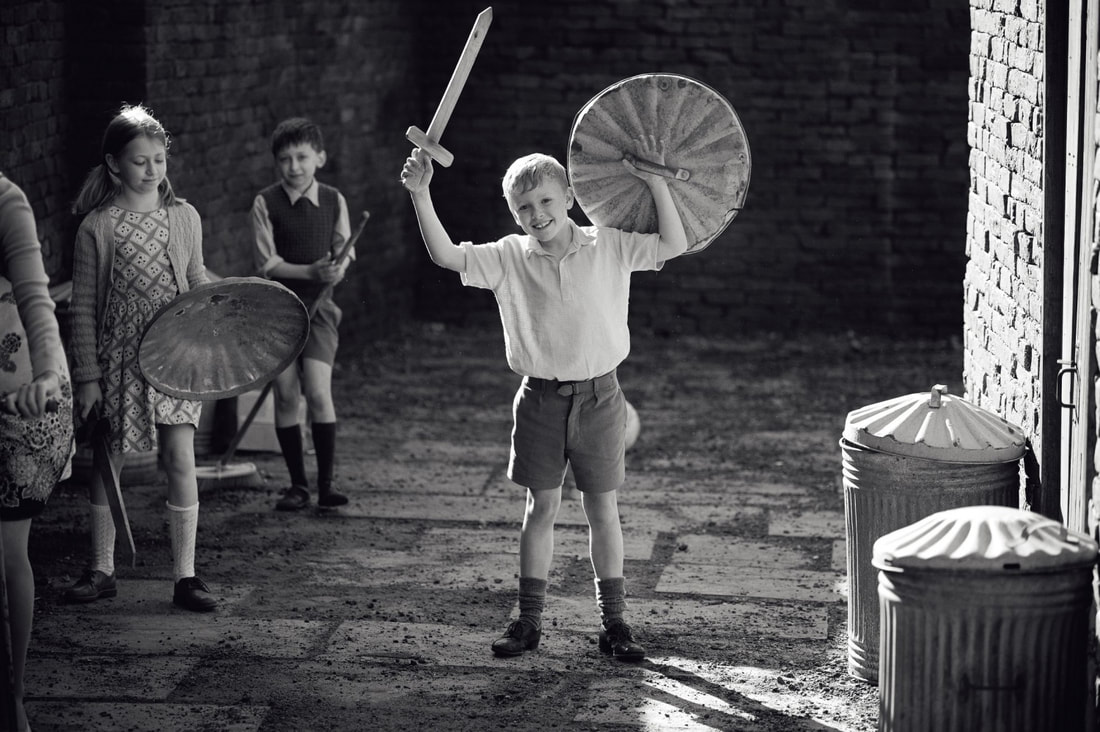
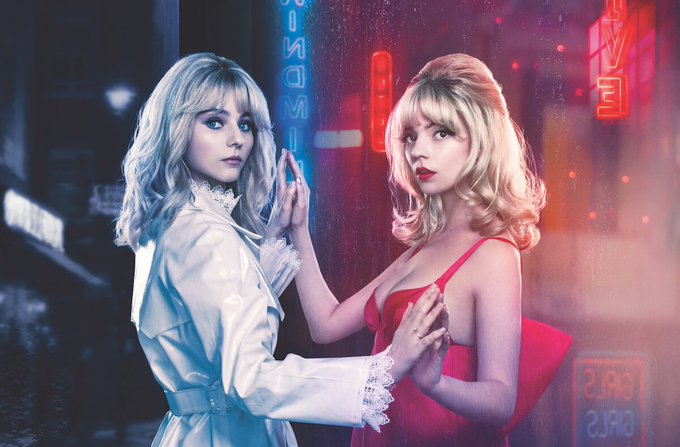
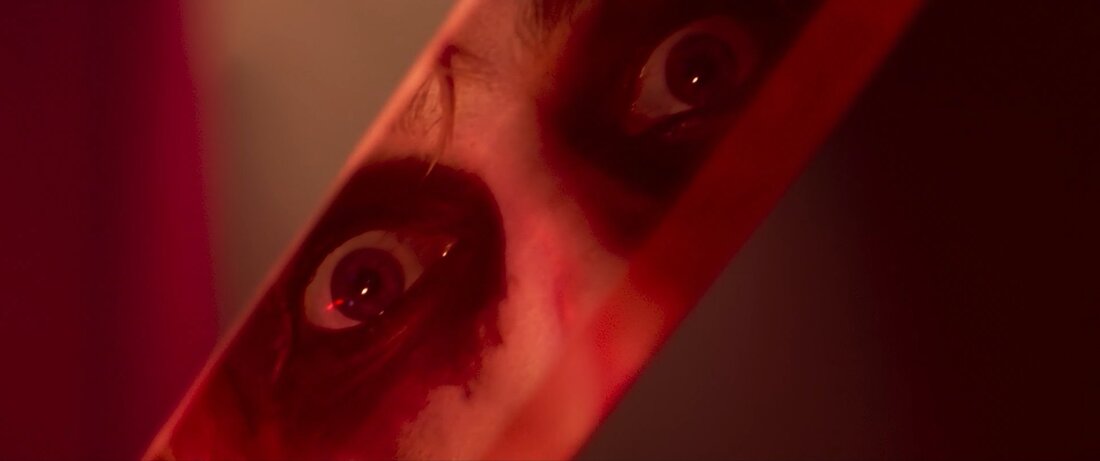
 RSS Feed
RSS Feed